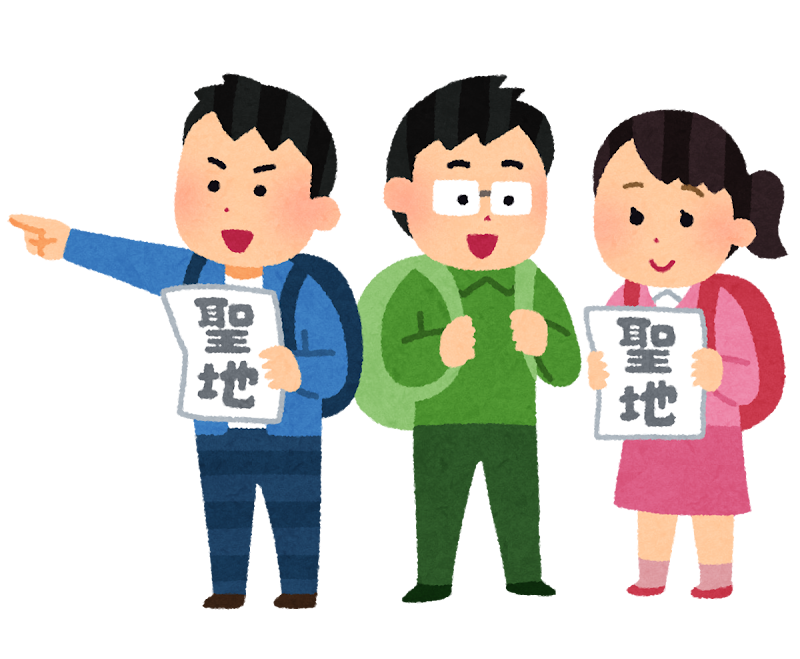
Upon moving from Tokyo to Okinawa, Teruaki “Teru” Nakamura falls for his lively classmate Hina Kyan, who works to help him feel included at his new high school. Due to her strong uchinaaguchi dialect, Teru often has a hard time following what Hina is saying. Even so, Hina continues to passionately explain aspects of Okinawan culture to him. Luckily, Hina’s best friend Kana Higa is eager to help with translation. Yet, Kana has her own reasons—she has developed a crush on Teru and uses this opportunity to approach him. (Adapted from MAL)
Critical Considerations
Moreso than other series, excluding perhaps Dosanko Gal wa Namara Menkoi, OkiTsura is particularly devoted to shoehorning in as much exploration and explanation of its setting’s culture as possible within its runtime, to the point where the narrative of the series and its scenes sometimes feel like an excuse to get from one explanation to another, almost like how it feels to watch American E/I children’s programming. This isn’t necessarily a bad thing, and the series’ content is very informative, but it can be exhausting and likely wouldn’t be a very good choice for a binge watch. There have also been complaints that the dedication to outlining aspects of Okinawan culture at every turn makes the series feel like a giant infomercial for Okinawa.

The information density of a production like this can make it hard to consume as a subtitled anime, and it was likely challenging to translate. To get it right, you would ideally seek advice from someone actually fluent in the dialect. Public details for how the translation work was done on OkiTsura seem sparse to non-existent. There’s a chance that Crunchyroll’s translators referred to literature and the show’s own frequent on-screen Japanese subtitles rather than going that far.

Somewhat akin to Golden Kamuy and its depiction of the Ainu, the Ryukyuan Kingdom’s status as a formerly independent state with its own customs, language, and culture that was made into a Japanese colonial territory looms over many of the show’s narrative choices. The main character is a boy from Tokyo who moves to Okinawa, has a fish out of water experience, and needs to have this whole world explained to him; he’s never even heard of sata andagi before and treats the dialect like it’s utterly indecipherable. The choice to call attention to the island’s legacy with World War II could have been a potential misstep, but it’s handled with a fair amount of tact. Discussion of current American military presence on Okinawa does not come up as a point of conversation. Answering the question of what could have been done better is something for which I am not equipped, but when watching the show, these points of tension were hard to ignore in my mind.
On The Map
Despite discussing points of Okinawan culture at large, little time is spent in the population center around Naha, and instead the story mainly set in Uruma, or more specifically Gushikawa, a community in roughly the west-central area of the island.
From early on, it was clear that a great deal of attention would be placed on OkiTsura by the municipal government of the city of Uruma. A seichijunrei map was produced, which highlighted sets from the anime and local restaurants. According to his Twitter, manga author Egumi Sora is pinned at Gushikawa, Uruma City, Okinawa, but it doesn’t seem to be public information whether or not the city is his childhood home. Standees of characters from OkiTsura, the manga author, and voice actors have been involved in numerous tie-ins and special events on and off the island to promote Uruma as a tourist destination.




Furusato Tax
On a crowdfunding platform called Ubgoe, over 8.9 million yen has been raised for an OkiTsura X Uruma City anime pilgrimage collaboration. It seems that this program was designed as a way for participants to contribute to the furusato tax system. Like with crowdfunding projects on Kickstarter, different levels of contribution yield different perks, which at the highest levels included exclusive merchandise, sata andagi, Ryukyuan glass cups, and some kind of travel deal. The promotional image for this campaign is based on a staircase in Uruma City.


City Website
The city of Uruma has a section of its website devoted to OkiTsura cross-promotional material. You can see photos of some of the festivals and ritual dances depicted in the show, and learn some details about the city of Uruma specifically.





One of these pages is a dialogue between Teru, Higa, and Hina, that explains some uchinaaguchi expressions. The conversation is advanced by scrolling the page.

Gushikawa Community Center
At Gushikawa Community Center, which appears in the anime multiple times, a table has been set up including some prints of locations from the anime and a guest notebook. It seems this table is one place where the maps are being distributed.

Manhole Covers
Like with several other popular anime, custom manhole covers have been produced and installed in 3 locations: Guchikawa Community Center, KIN Sunrise Beach, and Ginoza Michi-no-eki. These locations are pinned in the above Google Maps embed.


The degree to which OkiTsura feels like it was designed with tourism in mind from the beginning is a lot stronger than many of the shows in its niche. Whether or not its popularity bears out in affecting tourism to Uruma City in a positive and sustainable way has yet to be seen. For me, at the very least, it increased the depth of my awareness of Okinawan culture, or at least the version of it I was presented.

